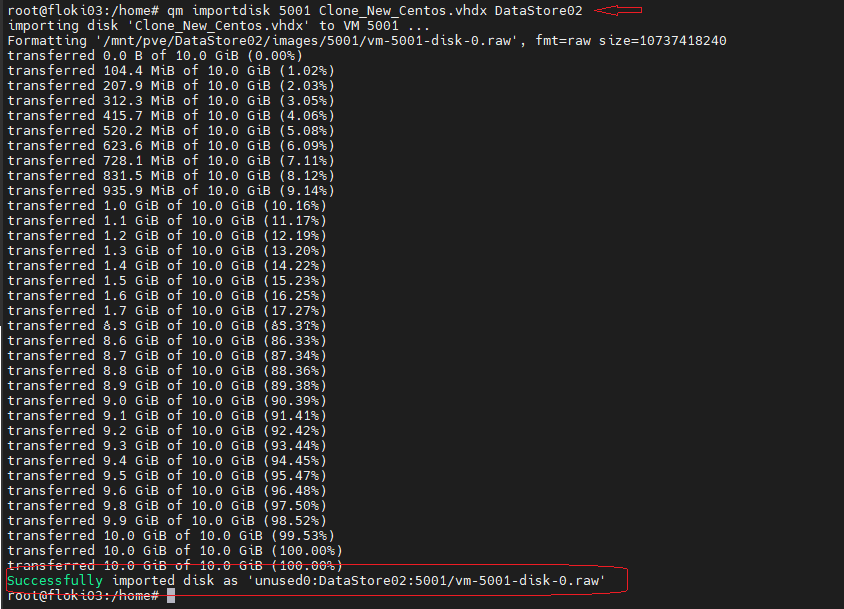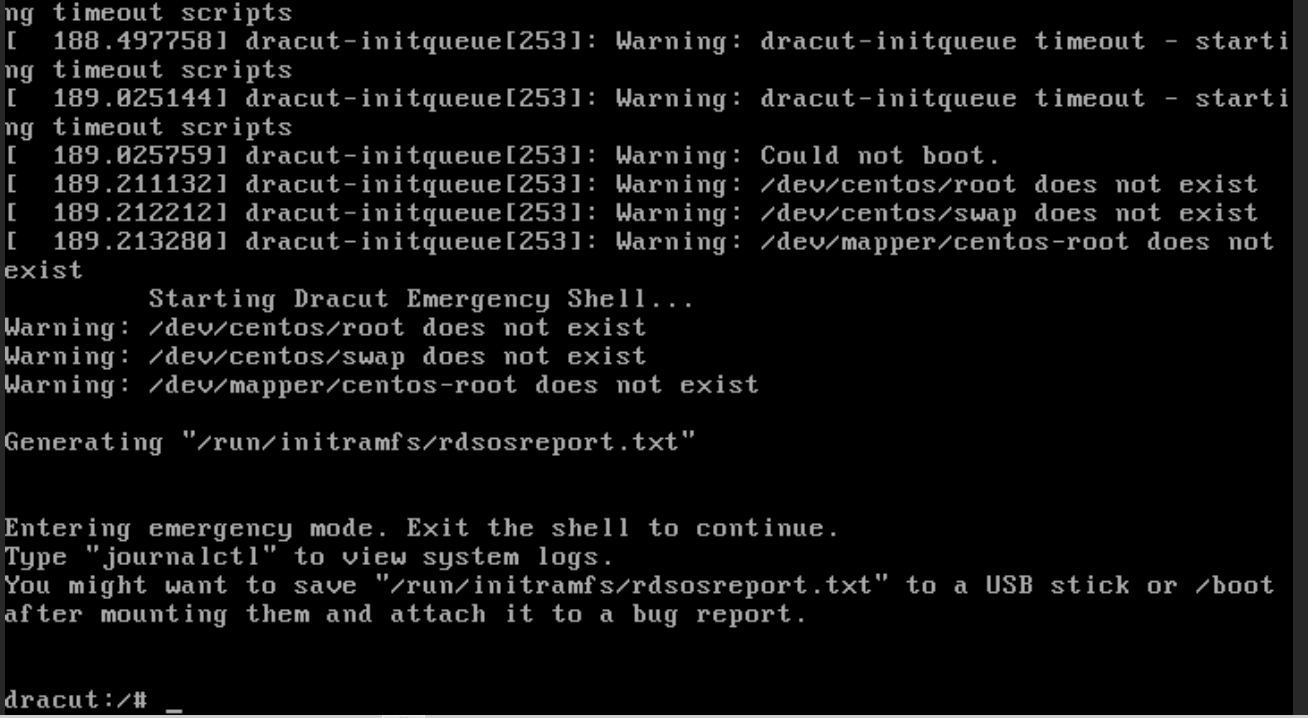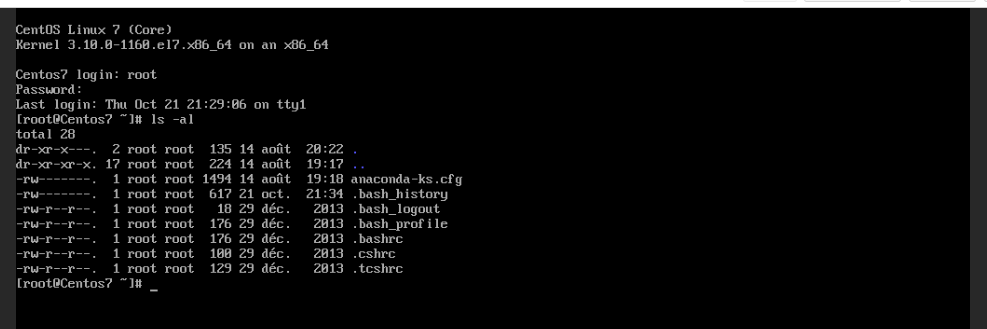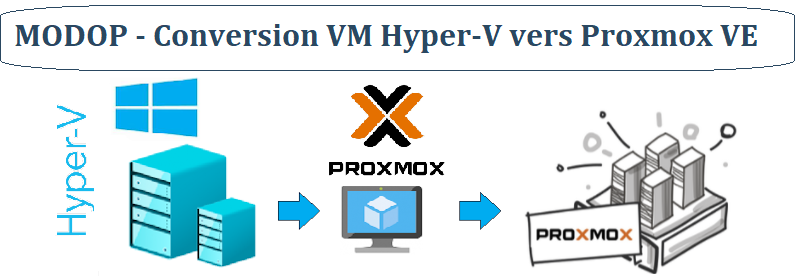Le but est d’exporter une machine virtuelle Hyper-V et l’importer sur un hyperviseur Proxmox VE. Dans mon exemple , j’utilise une machine virtuelle Cento7 sur un Hyperviseur Hyper-V.
1°) Exportation de la Machine Virtuelle Centos Hyper-V

Exportation de la machine Virtuelle

« Clique droit » et « Exporter »

Choisir l’emplacement d’extraction de la machine Hyper-V et « Exporter » . L’exportation, ici sur « c:\TEMP » , va exporter 3 items/Répertoires
- SnapShots

- Virtual Hard Disks

- Virtual Machines

Dans notre cas, nous sommes uniquement intéressé par le disque virtuel – VHDX.
Se rendre sur le répertoire « C:\Temp\Machine_Centos\Virtual Hard Disks » et copier le fichier VHDX sur l’hyperviseur Proxmox.
Pour faciliter les transferts de fichier du monde Linux⬄Windows , j’utilise MobaXterm.
- Disponible sur : https://mobaxterm.mobatek.net/

# scp Clone_New_Centos.vhdx root@floki03.house.cpb:/home


2°) Création de la machine HyperV sur PROXMOX
root@floki03:~# ls -al /home|grep vhdx
-rwxr-x--- 1 root root 1769996288 Oct 21 18:58 Clone_New_Centos.vhdx
Check l’intégrité du fichier HyperV
root@floki03:/home# qemu-img check -r all Clone_New_Centos.vhdx
No errors were found on the image.
On cherche le dernier VMID + 1 disponible sur notre infrastructure
root@floki03:/home# a=`qm list |awk '{print $1}' |grep -v VMID |tail -1` && a=$(($a + 1)) && echo $a 5001
Création de la machine sur l’hyperviseur Proxmox VE
root@floki03:/home# qm create 5001 --name Node01-centos7
Création du Hardware Machine
root@floki03:/home# qm set 5001 --memory 2048 update VM 5001: -memory 2048
root@floki03:/home# qm set 5001 --core 2 update VM 5001: -cores 2
root@floki03:/home# qm set 5001 --socket 1 update VM 5001: -sockets 1
root@floki03:/home# qm set 5001 --net0 virtio,bridge=vmbr0,firewall=1 update VM 5002: -net0 virtio,bridge=vmbr0,firewall=1
root@floki03:/home# qm set 5001 --serial0 socket update VM 5002: -serial0 socket
root@floki03:/home# qm set 5001 --bios seabios update VM 5002: -bios seabios

3°) Importation de la machine VHDX sur VMID 5001
root@floki03:/home# qm importdisk 5001 Clone_New_Centos.vhdx DataStore02

Attacher le disque unused0 (Sata0 , ide0 , scsi0 )
Attention le type dépend de la source d’installation de la machine.
root@floki03:/home# qm set 5001 --sata0 DataStore02:5001/vm-5001-disk-0.raw

« Machine vue de Proxmox VE »
Définir l’ordre de boot
root@floki03:/home# qm set 5001 --boot order='sata0'
Définir le type d’OS Machine
ostype => 'other, wxp, w2k, w2k3, w2k8, wvista, win7, win8, win10, l24, l26, solaris'
root@floki03:/home# qm set 5001 --ostype l26 update VM 5001: -ostype l26
Désactiver ACPI
root@floki03:/home# qm set 5001 --acpi 0 update VM 5001: -acpi 0
Activer « Guest Agent »
root@floki03:/home# qm set 5001 --agent 1 update VM 5002: -agent 1
Démarrage de la machine
root@floki03:/home# qm start 5001

La machine est désormais migrée et fonctionnelle sur l’hyperviseur Proxmox. Il restera à reconfigurer le réseau en fonction des spécifications réseau du bridge du vmbr0.
4°) TroubleShooting Boot Disque
Dans le cas où la machine virtuelle démarre en mode dégradé « Dracut »

Redémarrer la machine et passer en Noyau « rescue » Mode TroubleShooting

[root@Centos7 ~]# dracut --regenerate-all -f [root@Centos7 ~]# grub2-mkconfig -o /boot/grub2/grub.cfg [root@Centos7 ~]# reboot


Views: 32

